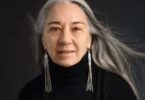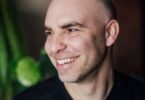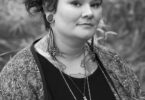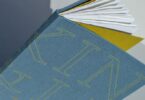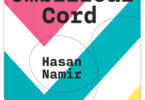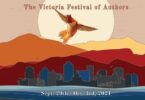Interview by L’Amour Lisik
In connection with the annual Victoria Festival of Authors taking place September 28 to October 2, 2022, Plenitude prose editor L’Amour Lisik interviews VFA author Tawahum Bige on their debut collection of poetry, Cut to Fortress. Climate Acts, Land Sings takes place Sunday, October 2, and they will be participating in the online event with Alessandra Naccarato and Julie Sze, hosted by Rita Wong.
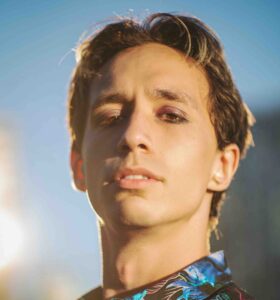 Tawahum Bige is a Łutselk’e Dene, Plains Cree poet living on unceded Musqueam, Squamish & Tsleil-Waututh territory. Bige has a B.A. in creative writing from Kwantlen Polytechnic University. Their land protection work against the Trans Mountain pipeline expansion led them to face incarceration in 2020. Cut to Fortress is their debut poetry collection.
Tawahum Bige is a Łutselk’e Dene, Plains Cree poet living on unceded Musqueam, Squamish & Tsleil-Waututh territory. Bige has a B.A. in creative writing from Kwantlen Polytechnic University. Their land protection work against the Trans Mountain pipeline expansion led them to face incarceration in 2020. Cut to Fortress is their debut poetry collection.
Cut to Fortress considers the possibility of decolonization through a personal lens, urging for a resistance that is tied using cord and old-growth tree roots; a resistance that tethers us all together. Tawahum Bige slices through the forts built overtop occupied Turtle Island to examine their origin and their own.
Tawahum Bige’s poem, “Bones Gather,” was published April 2020 with Plenitude. You can read it here.
You’re part of the “Climate Acts, Land Sings” panel for this year’s Victoria Festival of Authors alongside Alessandra Naccarato and Julie Sze, with Rita Wong as moderator. There are 10 other events happening between September 28 and October 2. Are there any events or authors you’re specifically looking forward to seeing? How will you approach your panel’s topic?
I’m definitely interested in a few of these talks, especially the “Forest to Poet Tree Walk.” I absolutely adore Joseph Dandurand. Also, “The Magical Writer: QTIPOC Authors Dissect Magic Realism” sounds incredible too, especially with Joshua Whitehead. To be honest, I’ll be moving around October 1st so I might not make them, but I know those will be amazing events along with the rest of the lineup of author events!
As for my approach, I feel like the art I exist within just embodies the panel idea. I write a lot from a place of seeing the land, being on the land and listening to the land and all that love the land gives to us. To protect that land or be in sacred relationship with the land is so important. How can you not hear the land and not see an equilibrium and ancient contract we have to hold with that land for our own continued existence here?
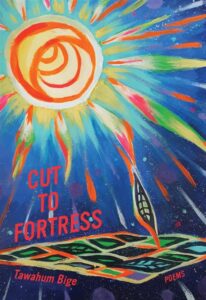 You’ve performed extensively as a spoken word poet as well as a musician. Many of the poems in your debut poetry collection Cut to Fortress carry the rhythm of these two other art forms onto the page—internal rhymes, spacing for flow, repetition. But there are also prose poems such as “Envy” and “Short Talk on Diaspora.” Do you know what form a poem will take when you’re composing it? What does your writing process look like from start to finish?
You’ve performed extensively as a spoken word poet as well as a musician. Many of the poems in your debut poetry collection Cut to Fortress carry the rhythm of these two other art forms onto the page—internal rhymes, spacing for flow, repetition. But there are also prose poems such as “Envy” and “Short Talk on Diaspora.” Do you know what form a poem will take when you’re composing it? What does your writing process look like from start to finish?
An invitation I received when I was learning about poetry during my KPU Creative Writing studies was with my prof, Cathy Stonehouse. She presented that some folks may see a poem as either for the page or performance, but invited us to challenge that idea. It was a small moment but crucial for how I saw my work, the oral tradition of Dene and Cree culture, and how poetry is a form of storytelling I believe is meant to be spoken. So it’s written that way, even my page poems act as something I could speak out loud. It may be a prose poem but if I performed it, it would be spoken word, it’s meant to make sense that way.
As for the form as I’m writing it, a few of the poems in this collection came from classes where we were specifically practicing a form or technique of poetry, such as the palindrome “No Space” or the prose poem “Inner City Owl,” but much of the poetry sprang forth the way it needed to be expressed. “Envy” was a phone-note I wrote while experiencing housing instability and being invited to spend time at another university’s Indigenous student space and I was processing what it feels like to see others with more than I had, but especially settlers. It just came out in paragraphs and seemed to want to exist that way. Other times, I might write a poem as a big block of text in my paper notebook and when I transcribe, line-breaks naturally emerge. Of course these are shaped by lessons, from larger structural teachings in my program, to inspiration from fellow artists or even specific advice, such as not ending a line with words like “and,” “or,” etc. unless I had a good reason to. Then, edits could be just a couple read-throughs and minor edits or coming back to the same poem over years and still needing to structurally change the poem. The long answer of my process can be complicated but it is guided by regular practice of reading other work, strengthening techniques, and that good old untouchable need to tell a story coming from inside of me.
Some of the recurring subjects in your book include colonialism, intergenerational trauma, and environmental destruction, all of which can be difficult to write about on an emotional and mental level. How do you care for yourself when writing about trauma? Do you have any advice for writers who are writing about trauma?
Cut to Fortress is my formative poetry collection. It’s how I found poetry, many written in classes and out of a deep traumatic place of having lost family in those same time periods. This collection is a mixture of the hope I needed to find and write for myself to the dark storytelling that had to happen for me to process and understand some difficult things that happened to me. My process doesn’t always look like this, as well as my body of work, but poetry and writing and performance are coping mechanisms for me to be present in the world and to build better mental health. It also helps articulate how I view the world, informed by my lived experience and teachings, a way of crystallizing opinions and understanding of current events. It was so freeing to have that space to articulate how I felt about colonialism, how badly I wanted to see a better way into the future. And of course, it helped me understand my identity, but larger than that was the space I had at KPU to engage with the journey of reconnecting with my cultural roots at my own pace and on my own terms, guided by many mentors and family figures including my adoptive mom, siblings, niece, nephew and all the other community connections.
Which authors are you reading and/or whose music are you listening to right now? Do you have any writing projects on the go?
I’ve been digging so slowly through Hope Matters by Lee Maracle, Columpa Bobb and Tania Carter. An amazing collaborative work of that family and so, so poignant and truthful. I’ve also been slowly digging through Patrick Lane’s compendium, The Collected Poems of Patrick Lane. It’s beautiful to see such pure poetic senses infuse decades worth of poetry, and so inspiring to what I hope to accomplish in the future with all the authors I just mentioned. As for current works, I’ve been working on the second part of a poetry collection series about the development of my voice from when I was born and how it impacted who I am today. I’m also in the final stages of creating a music album about my land protection work that eventually led to my incarceration in 2020. Many projects on the go as always~
…
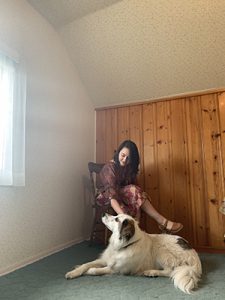 L’Amour Lisik is an artist, writer, and QPOC who lives on the unceded traditional territories of the Lekwungen and W̱SÁNEĆ Peoples. She holds a BFA in Writing from the University of Victoria, where she focused on poetry and creative nonfiction. She works as managing editor for The Malahat Review.
L’Amour Lisik is an artist, writer, and QPOC who lives on the unceded traditional territories of the Lekwungen and W̱SÁNEĆ Peoples. She holds a BFA in Writing from the University of Victoria, where she focused on poetry and creative nonfiction. She works as managing editor for The Malahat Review.

